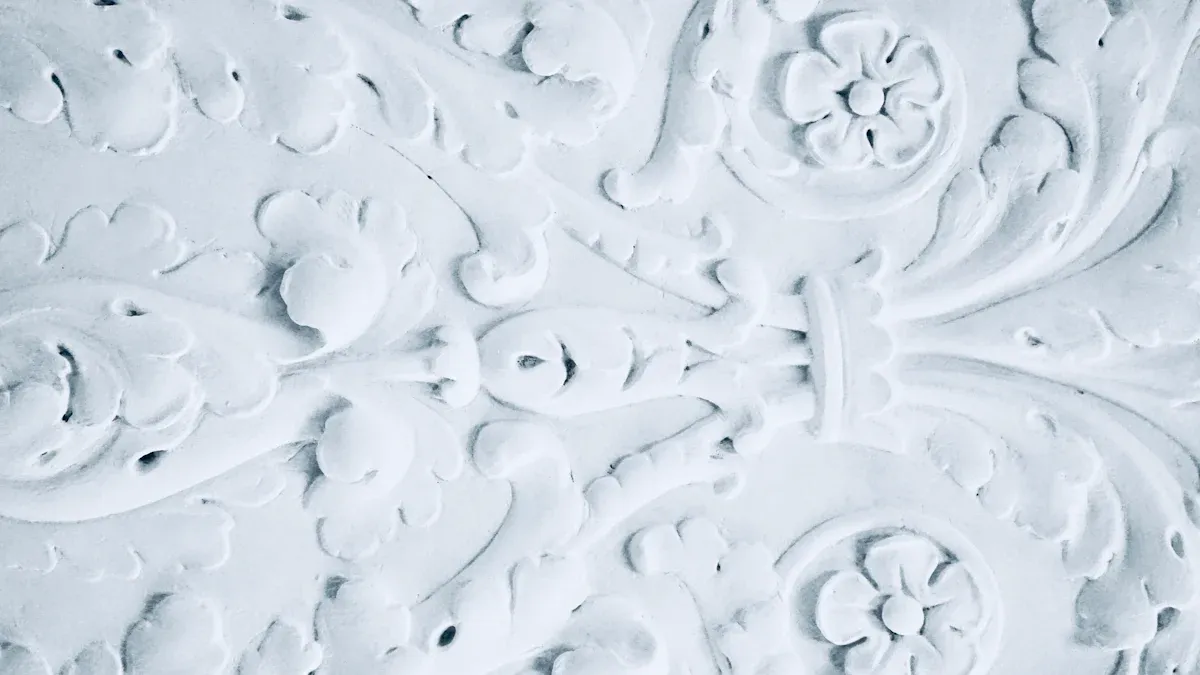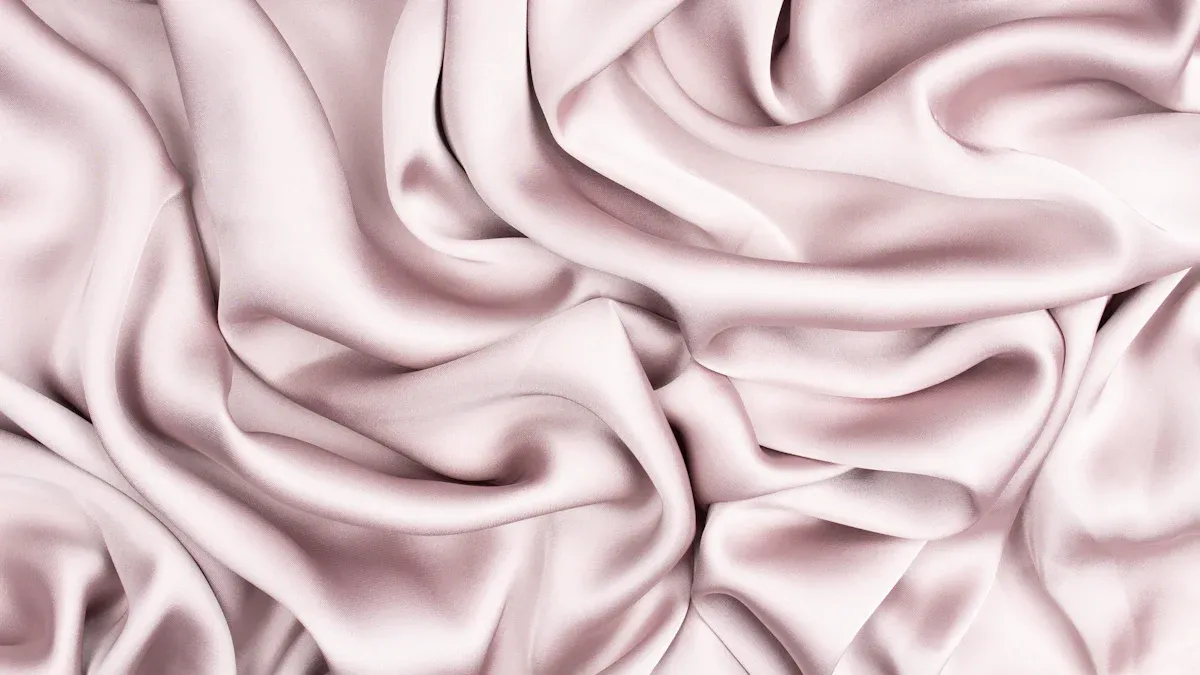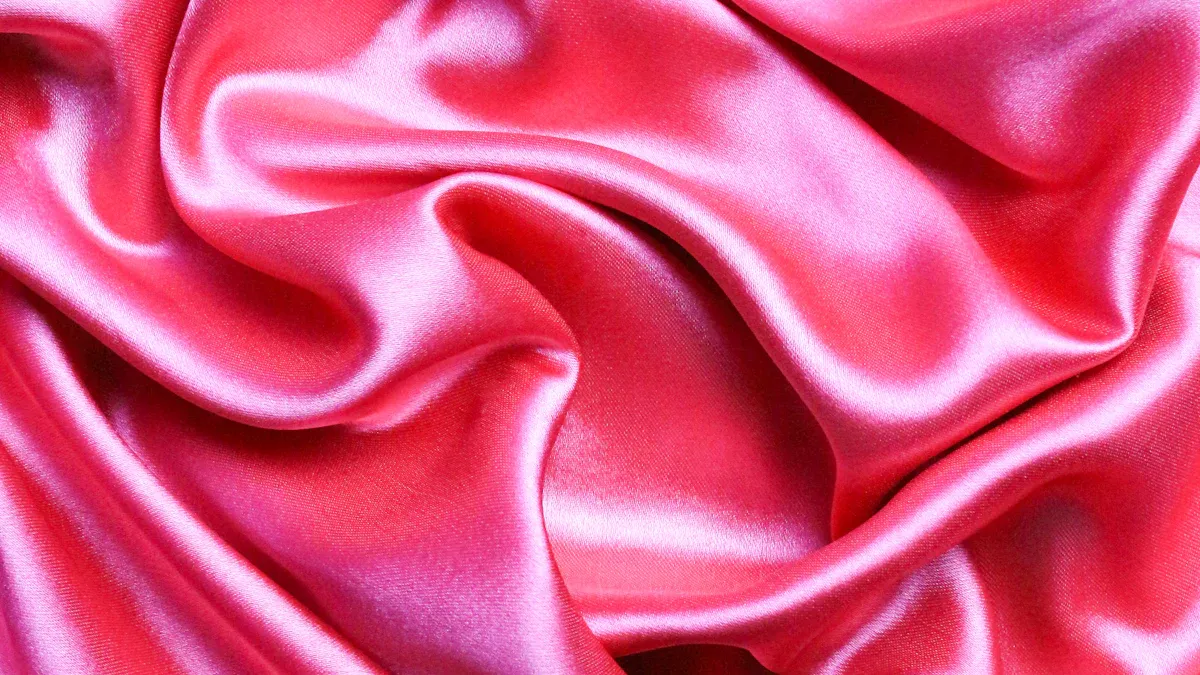
You can emboss many kinds of fabrics. These include cotton, polyester, velvet, leather, silk, linen, rayon, wool, blends, and synthetics. Suerte has many custom embossed fabrics. This lets you pick textures and patterns that match your ideas.
Some of the most common fabrics for embossing are:
- Custom Embossed Fabric
- Rib Fabric
- Chiffon Fabric
- Satin Fabric
- Scuba Fabric
- Mesh Fabric
- Jersey Fabric
- Rayon Challis
- Roma Fabric
- Hacci Fabric
- Oxford Fabric
- Pique Fabric
- French Terry
- Fleece Fabric
- Yoga Fabric
Designers and makers like embossed fabrics for their special look and feel. More people want fancy textiles and eco-friendly materials. This helps new ideas grow, especially in fashion and home design.
Key Takeaways
- Many fabrics can be embossed. These include cotton, polyester, velvet, and leather. Pick the best fabric for your project. Think about what you need before you choose.
- Natural fabrics like cotton and silk have special features. Cotton lets air pass through and is simple to wash. Silk gives a fancy and shiny look.
- Synthetic fabrics like polyester and nylon are strong and last long. They do not cost much. They keep their bright colors and are simple to care for.
- Blended and specialty fabrics mix good things from both types. They have cool textures and styles. This helps your designs look different.
- When embossing, think about how much heat and pressure the fabric can take. This helps your patterns stay clear. It also keeps the fabric safe.
What fabrics can be embossed
Natural fabrics
Many natural fabrics can be embossed. Some examples are cotton, silk, linen, and wool. Each fabric has its own special features. Cotton is soft and lets air pass through. Silk is shiny and looks fancy with patterns. Linen feels crisp, and wool is warm and strong.
Here is a table that shows what makes some natural fabrics good for embossing:
| Fabric Type | Unique Properties Relevant to Embossing |
|---|---|
| Embossed Cotton | Soft, lets air in, comfy to wear, easy to clean. |
| Embossed Silk | Very smooth, shiny, looks great with patterns. |
When you pick a natural embossed fabric, think about how to clean it. Cotton is simple to wash but can shrink and wrinkle. Silk needs gentle cleaning and can lose color in sunlight. Wool keeps its shape but shrinks if it gets too hot. The table below gives more details:
| Fabric | Advantages | Disadvantages |
|---|---|---|
| Cotton | Light, lets air in, strong, good for allergies | Wrinkles fast, shrinks in hot water, can get moldy |
| Silk | Light, strong, good for allergies, does not wrinkle | Loses color in sunlight, needs dry cleaning, stains with water |
| Wool | Lets air in, lasts long, does not wrinkle | Can feel scratchy, shrinks with heat, needs hand washing |
Embossed fabrics made from natural fibers are great for clothes, accessories, and home textiles. You can use them for tablecloths, curtains, and bedding. Raised patterns make these fabrics look stylish and feel interesting.
Synthetic fabrics
Synthetic fabrics like polyester, nylon, and rayon are also good for embossing. These fabrics have many benefits. Polyester costs less than cotton and keeps colors bright. Nylon does not stain and dries fast. Rayon is soft and hangs nicely.
You can see why synthetic embossed fabric is useful in the table below:
| Advantage | Description |
|---|---|
| Low Cost | Polyester costs less than cotton, so it saves money. |
| Easy Care | Needs little work; can be washed in a machine and dries fast. |
| Excellent Color Retention | Stays bright even after many washes. |
| Holds Intricate Patterns Well | Keeps detailed designs during embossing, making the fabric look better. |
When you take care of synthetic embossed fabrics, remember these tips:
- Wash in a machine with regular soap.
- Do not use rough cycles to keep patterns safe.
- Wash by hand if you want to be extra careful.
- Keep fabrics dry to stop mold and mildew.
- Store away from sunlight so colors do not fade.
Embossed home textile fabric made from synthetics is good for furniture, curtains, and pillows. Embossed upholstery fabric made from polyester or nylon lasts a long time and keeps looking nice.
Blends and specialty fabrics
Blends and specialty fabrics mix natural and synthetic fibers. You can emboss blends like cotton-polyester, rayon-polyester, and special fabrics such as velvet, leather, pleather, and fleece. These fabrics have cool textures and styles.
Embossing makes these fabrics look even better. You get lots of different textures and depths. You can make your designs unique. Plain fabric can become something special.
Here are some top choices for embossed fabric:
- 100% Polyester: Keeps the embossed look for a long time.
- Polyester Blends: May not keep embossing as well as pure polyester.
Specialty fabrics like velvet and leather feel fancy. Embossed velvet is shiny and soft. Leather and pleather look bold with raised patterns. Fleece is good for home textiles, adding warmth and texture.
The table below shows what makes specialty embossed fabrics special:
| Characteristic | Description |
|---|---|
| Raised Designs | Shapes or designs made with heat embossing, adding texture and style. |
| Luxurious Aesthetic | Softness and shine with patterns make the fabric stand out. |
| Versatile Applications | Used for clothes and furniture, making products look better. |
| Resilient Images | Embossed designs last a long time and do not wear out easily. |
You can use embossed fabrics for many things. Embossed home textile fabric works for bedding, blankets, and cushions. Embossed fabric is also good for fashion, accessories, and furniture.
New technology makes embossing even cooler. You can use recycled polyester and eco-friendly materials. Digital printing and laser cutting help make detailed designs. These new ways let you pick from more types of embossed fabric and help the planet.
Tip: When you choose what fabrics to emboss, think about how you will use them, how to clean them, and the style you want. Suerte has lots of custom embossed fabrics, so you can find the best one for your project.
Embossed fabrics: Why they work
Fiber Structure and Embossing
Fiber structure changes how embossing works. Fabrics with tight fibers, like polyester, keep patterns clear. These fibers help the design stay sharp and last longer. Natural fibers, like cotton and wool, are not as tight. This makes them soft but can cause edges to fray. Look at the table below to see how fiber types change pattern quality and strength.
| Fiber Type | Molecular Structure | Durability | Effect on Embossed Patterns |
|---|---|---|---|
| Synthetic | Tightly packed | High durability | Suitable for long-lasting embossed designs |
| Natural | Less tightly packed | Less durable | Prone to fraying, affecting pattern integrity |
Roll embossing makes tiny patterns on fabric fibers. This method helps fabric soak up water and get stronger. You can use embossed fabric for clothes, home items, and even medical things.
Heat and Pressure Tolerance in Embossing
Fabrics must handle heat and pressure for embossing. Polyester and leather can take high heat and pressure. They keep their patterns looking sharp. Cotton can take some heat and pressure. Velvet is more gentle and needs care. The table below shows how each fabric reacts to heat and pressure.
| Material | Tolerance to Heat | Tolerance to Pressure |
|---|---|---|
| Cotton | Moderate | Moderate |
| Polyester | High | High |
| Leather | High | Moderate |
| Velvet | Low | Low |
Fabrics that resist heat and pressure do not burn or shrink. This makes them good for home and furniture use. These products last a long time and look nice.
Surface Texture and Embossing Quality
Surface texture changes how embossed fabric looks and feels. Velvet gets a soft, raised pattern that looks fancy. Embossing adds depth and makes the fabric stand out. You can use embossed fabric for bedding, pillows, and curtains to add style.
- Texture makes the fabric look better.
- It gives the fabric a cool feel and look.
- Embossing can help the fabric last longer.
Embossed fabrics last longer than plain ones. The table below shows how they compare.
| Feature | Embossed Fabrics | Non-Embossed Fabrics |
|---|---|---|
| Durability | High resistance to scratches and wear | Moderate durability; prints may fade |
| Water Resistance | Water-resistant finish from embossing | Light splash-proof, prone to smudge |
| Common Wear | Less visible scuffs due to texture | Print areas can crack or peel over time |
| Appearance Longevity | Maintains appearance longer, design embedded | Fades and peels more quickly |
Embossed fabric makes products feel special and fancy. You get a unique look for clothes, accessories, and home items. Raised patterns make your designs stand out. Choosing embossed fabric helps your space look and feel great.
How to emboss fabrics
Embossed fabric process overview
You can make embossed fabric with heat and pressure. Special machines press patterns into the fabric. Here are the main steps you need to follow:
- Heat the embossing machine to the right temperature. For natural fabrics, set it between 300 and 350°F.
- Put your fabric on the bottom plate. Cover it with a protective layer.
- Place the embossing plate with your design on top.
- Lock the machine. It will press with heat and pressure for 10 to 30 seconds.
- Take out the fabric and let it cool. Now your embossed fabric is ready.
Different machines can be used for embossing. Plate embossing is good for small pieces. Roller embossing works best for long rolls of fabric. Some machines use ultrasound for embossing without needles or thread. These methods help you make embossed home textile fabric for many uses.
| Type of Embossing | Description |
|---|---|
| Plate Embossing | Good for small pieces and custom designs |
| Roller Embossing | Best for continuous rolls of fabric |
| Ultrasonic Sewing Embossing | Uses sound waves for special effects |
How to emboss cotton fabrics
To emboss cotton fabrics, you need a few simple tools. Use a stencil or stamp to put ink on the cotton. Sprinkle embossing powder over the ink. Shake off extra powder. Use a heat gun to melt the powder. This makes a raised design. Cotton can be thick or flexible, so check your fabric before you start. This helps you get the best embossed fabric results.
Tips for other fabrics
When embossing synthetic or blended fabrics, look at the base material. High-quality materials give better embossed fabric. Use custom metal dies for deep patterns. Test your design in different light. For embossed home textile fabric like velvet or leather, change the heat and pressure to avoid damage. If you want to emboss velvet or leather, use gentle settings and test on a small area first.
Tip: Always read care labels for your embossed home textile fabric. Wash gently, use cold water, and do not use fabric softeners. Air dry flat and keep away from sunlight to keep your embossed fabric looking new.
| Care Practice | Description |
|---|---|
| Gentle Washing | Use delicate cycles or hand wash |
| Use Cold Water | Prevents color loss and pattern damage |
| Air Dry Flat | Keeps patterns crisp and prevents shrinking |
| Store Carefully | Fold neatly and avoid heavy stacking |
You can emboss cotton, velvet, synthetic blends, and leather. Each fabric has its own special features. Some are soft, while others are strong. Suerte’s custom embossed fabrics give you lots of choices. You can pick from many designs and get them quickly. Advanced machines help make sure the quality is high. Embossed fabrics work well for clothes, furniture, and accessories.
| Fabric Type | Ideal Thickness (oz/yd²) | Characteristics |
|---|---|---|
| Embossed Velvet Upholstery Fabric | 14 – 18 | Feels fancy and soft, keeps its shape well |
| Embossed Cotton Fabric | 4 – 6 (lightweight) | Lets air in, costs less, good for summer clothes |
| 8 – 10 (medium-weight) | Works for home things like tablecloths and napkins | |
| Embossed Synthetic Fabric | 12 – 16 | Strong, does not stain, great for furniture |
Tip: Look at the ways you can customize, the fabric’s features, and how thick it is before picking a fabric to emboss. This helps you get the best results for your project.
| Checklist Item | Description |
|---|---|
| Customization Options | Choose colors, prints, and embossing to make your product better |
| Fabric Properties | Make sure the fabric matches how you want to use it |
FAQ
What is embossed fabric used for?
You can use embossed fabric for clothing, home decor, and accessories. It works well for upholstery, curtains, bedding, and even handbags. Embossed patterns add texture and style to your projects.
How do you care for embossed fabric?
Wash embossed fabric gently. Use cold water and mild detergent. Air dry flat to keep the patterns crisp. Always check the care label for special instructions.
Can you emboss any type of fabric?
You can emboss many fabrics, including cotton, polyester, velvet, leather, and blends. Some fabrics hold patterns better than others. Test a small piece first to see the results.
Does embossing affect fabric durability?
Embossing can make fabric stronger by adding texture. The raised patterns help hide small scratches and wear. Your embossed items often last longer and look new for a long time.
Can you customize the embossed pattern?
Yes! Suerte lets you choose from many patterns, colors, and textures. You can create a unique look for your project. Custom options help you match your design ideas perfectly.



